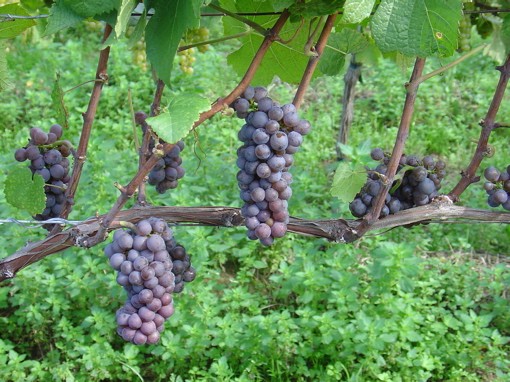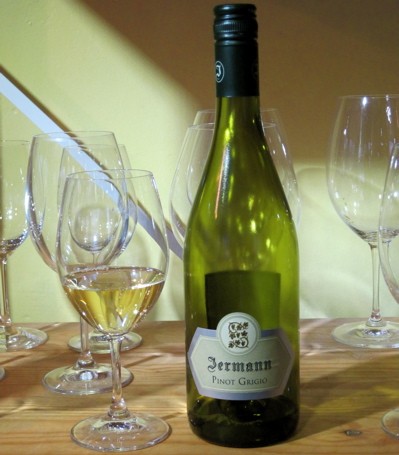Pinot grigio is an unequivocal commercial success. From sales of literally nothing in the mid-1970s, pinot grigio has risen to second place among white varietal wines in the United States, trailing only chardonnay.
Success has come at the expense of value, however, and many of those pioneering pinot grigios are simply not a good deal any more. The name that ruffles the most feathers in the wine world is restaurant darling Santa Margherita Pinot Grigio, which retails for $20 to $25 a bottle and often appears on wine lists at $40 or more.
While a crisp white of moderate alcohol and intensity is dandy and a handy tool to have in one's bottle arsenal, the market is full of wines that perform in this role as well as pinot grigio for a fraction of the price. Look to Spain's albariño, France's picpoul, and New Zealand's sauvignon blanc for zesty, characterful refreshment at $10 to $15 a pop.
That said, laboring in the shadow of Santa Margherita is another style of Italian pinot grigio that we sample today to see if it's worth the bother...
Today's wine come from a long-established producer who has recently adjusted his prices to compete with the Santa Margheritas of the world. In the past, many of this company's wines, while beautiful, were expensive. Let's see if they've maintained quality at the lower price point.
2008 Jermann pinot grigio Venezia Giulia ($18 - Veritas Gateway to Food and Wine)
Full, rich yellow. Wowza aromas of intense fruits led by ripe peach, and backed up by substantial minerals. Full, unctuous body. Could use a touch more acidity. Very long finish, ending with a touch of bitterness. This wine was even better on the second day, with the fruit maintaining intensity but reined in by more apparent acidity.
This would be terrific with a broad range of meatier fish dishes, and poultry that isn't too heavily sauced.
The verdict: Thrill
The northeast is ground zero for pinot grigio in Italy, with the regions of Trentino-Alto Aldige, home to Santa Margherita, and Fruili-Venezia Giulia, where Jermann is located, leading the pack. This part of the boot has historic links with Austria, and that shows not only in language, but also in the production of intense white wines.
Pinot grigio is a bit of an enigma. Known elsewhere as pinot gris, it achieves its most characterful expression in Alsace, though it does well domestically in Oregon. It's actually a mutation of pinot noir, and different clones range in color from gold to quite pink. If it has a fault, it is a tendency to get overripe in warmer regions, which leads to high alcohol and a lack of acidity that makes it taste a bit ponderous.
Today's wine makes use of a technique generally reserved for red wines: skin contact. Typically when making white wine, the grapes are pressed immediately and the skins are not allowed to macerate in the juice as it ferments. Grape skins are rich in tannins, color compounds and chemicals related to flavor and aroma, so leaving them in a white wine increases color and adds elements not common in white wines. This can easily be overdone, particularly on the tannin front, where astringent qualities quickly become apparent. Jermann takes a conservative approach, fermenting only a portion of the pinot grigio with its skins. This adds some complexity without dominating the essential varietal character of the wine.
"Thrill or Swill?" aims to expand wine drinkers' horizons -- including Gut Check's. If you have been curious about a grape or wine and want Gut Check to try it, let us know via the comments thread. If we can find it (and if we can afford it), we'll buy us a bottle, yank the cork and report back.







